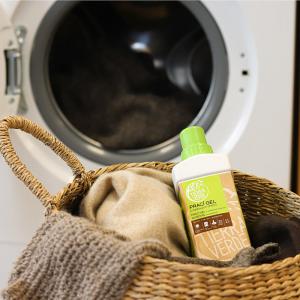
How to Wash a Blanket in the Washing Machine and Preserve Its Softness and Shape?

How to Properly Wash a Blanket in the Washing Machine?
Washing blankets can be a daunting task, especially when dealing with larger pieces or materials that require special care. Whether it's a sofa throw, bedspread, or winter blanket, it's crucial to know how to wash a blanket in the washing machine correctly to prevent damage and maintain its appearance and qualities. Proper blanket care not only ensures cleanliness but also extends their lifespan.
In this article, you'll learn step-by-step how to achieve the best results when washing a blanket in the washing machine.
Why is it important to know how to wash a blanket properly?
Blankets are often used daily, come into contact with skin, pets, and can easily absorb dust and other impurities. Therefore, it's essential to wash blankets from time to time to keep them hygienically clean and fresh. However, improper washing can lead to loss of softness, damage to the material structure, or even shrinkage of the blanket. This is particularly important for more expensive and luxurious blankets, where material quality is crucial.
Before washing the blanket
The first step before washing the blanket is to thoroughly check the label. The manufacturer always provides important instructions regarding the proper care of the specific blanket. You'll find out, for example, whether the blanket is suitable for machine washing or requires special care at a dry cleaner. If the blanket is made of delicate materials such as wool or cashmere, the label often recommends professional cleaning.
If there are stains on the blanket, it's advisable to treat them before washing. You can use a mild stain remover that won't damage the fibers or leave unpleasant chemical residues on the blanket. Stains should be treated as soon as possible to achieve the best result.
How to properly prepare a blanket for washing in the machine
Once you know your blanket can be machine washed, it's time to prepare it for washing. Here are some tips to help you achieve optimal results:
-
Remove hair, dust, and dirt: Blankets can easily collect dirt such as pet hair or dust. Before washing, gently shake the blanket or clean it using a vacuum cleaner with an upholstery attachment. This prevents these impurities from clogging the washing machine filter.
-
Fold the blanket: If the blanket is large and difficult to fit into the washing machine, try folding it so that it is evenly distributed and doesn't obstruct the drum's rotation. It's important that the blanket fits freely in the drum and isn't too compressed, as insufficient space can prevent proper washing.
Choosing the right detergent
When it comes to choosing a detergent, it's important to select the right one. If you're wondering how to wash a blanket to maintain its softness and structure, you should opt for a mild detergent. Common detergents can be too harsh, especially for more delicate materials, such as wool or silk. There are detergents on the market specifically designed for delicate fabrics that provide better fiber protection.
If you want your blanket to have a pleasant scent after washing, you can also use fabric softener. However, be cautious, as fabric softeners can cause fiber clumping in some materials, which can ruin the blanket.
Try our natural products
How to set the washing machine
Setting the washing machine is another key step in the washing process. Here are some rules you should follow:
-
Washing temperature: Choose a lower washing temperature, ideally 30–40 °C. Higher temperatures can cause the blanket to lose its shape or damage the fibers. For more delicate materials like wool or down, always choose a lower temperature and a gentle washing cycle.
-
Washing program: If your washing machine has a special program for washing blankets or quilts, definitely use it. These programs are designed to handle larger volumes of textiles while being gentle on the material. If you don't have such a program, choose a gentle washing cycle or a program for delicate fabrics.
-
Spinning: When washing a blanket, it's important to set a lower spin speed. High speeds can deform the blanket and damage the fibers. It is recommended to choose speeds between 600–800 revolutions per minute.
Proper drying of the blanket
After washing, it's time to focus on drying the blanket. If the blanket is not intended for tumble drying (which is common for most blankets), you should dry it naturally. The best way is to let the blanket air dry. Ideally, it should be spread out on a flat surface to prevent deformation. When drying the blanket on a line, hang it so that it is evenly distributed and doesn't lose its shape.
Air drying is slower but gentler on the blanket. If you're in a hurry, you can speed up drying with a fan directed at the blanket, but always avoid direct sunlight, which can cause color fading.
How often should you wash a blanket?
The frequency of washing a blanket depends on how often it's used and the environment it's in. If the blanket is used daily, such as a bed or sofa throw, it is recommended to wash it at least once every three months. Blankets used seasonally, like winter quilts, need washing once or twice a year.
Regular washing ensures that your blankets remain clean and hygienic, which is especially important for allergy sufferers or households with pets.
Properly washing a blanket in the washing machine is not complicated, but it requires following certain rules. Knowing how to wash a blanket ensures that your blanket remains soft, clean, and lasts a long time. Follow the label instructions, use a mild detergent, and don't forget the proper washing machine settings and gentle drying. Proper blanket care is an investment that pays off – your blanket will remain not only clean but also pleasant to the touch for many years.







